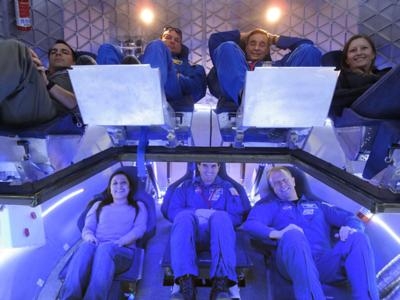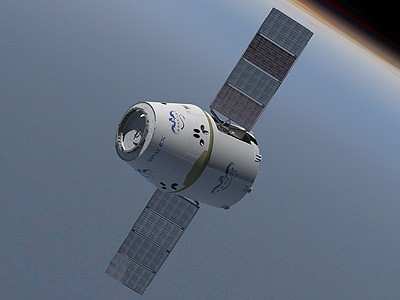Wed, May 09, 2012
Layout Will Allow Astronauts To Move Effectively Within The Vehicle
SpaceX has finished an important evaluation of a prototype Dragon spacecraft designed to carry people into orbit. This key milestone is part of SpaceX's partnership with NASA under a funded Space Act Agreement to advance the design of crew transportation vehicles. The primary goal of the tests was to determine whether the layout will allow astronauts to maneuver effectively in the vehicle. Several veteran space shuttle astronauts and NASA engineers conducted the evaluation during a pair of two-day-long reviews.

"I am very pleased with the progress SpaceX and our other commercial partners are making during the CCDev2 effort," said NASA Commercial Spaceflight Director Philip McAlister. "Together with NASA's development of beyond low-Earth orbit systems, commercial crew and cargo transportation is an integral part of our overall human spaceflight program."
As part of the Commercial Crew Development Round 2, or CCDev2, agreement, the company invited the astronauts and engineers to its headquarters in Hawthorne, Calif., to conduct the evaluation. The prototype was equipped with seats, lighting, environmental control and life support systems, conceptual displays and controls, cargo racks and other interior systems. "This milestone demonstrated the layout of the crew cabin supports critical tasks," said SpaceX Commercial Crew Development Manager Garrett Reisman. "It also demonstrated the Dragon interior has been designed to maximize the ability of the seven-member crew to do their job as effectively as possible."

During the reviews, space shuttle veterans Rex Walheim, Tony Antonelli, Eric Boe and Tim Kopra participated in so-called "human factor assessments." This included entering and exiting Dragon under normal and emergency scenarios. They also performed reach and visibility evaluations. "As an anchor customer for commercial transportation services, we are happy to provide SpaceX with knowledge and lessons learned from our 50 years of human spaceflight," said Commercial Crew Program Manager Ed Mango. "We appreciate the opportunity SpaceX gave us to provide feedback on these critical interior systems while the company maintains its flexibility to appeal to other customers."
This is the seventh of 10 milestones SpaceX must meet under the CCDev2 agreement, which continues through July 31. This includes the development of a launch abort system for crew escape during launch or ascent. All of NASA's industry partners continue to meet their established milestones in developing safe, reliable and affordable commercial crew transportation capabilities. (Images courtesy SpaceX)
More News
He Attempted To Restart The Engine Three Times. On The Third Restart Attempt, He Noticed That Flames Were Coming Out From The Right Wing Near The Fuel Cap Analysis: The pilot repor>[...]
Make Sure You NEVER Miss A New Story From Aero-News Network Do you ever feel like you never see posts from a certain person or page on Facebook or Instagram? Here’s how you c>[...]
From 2009 (YouTube Edition): Leading Air Show Performers Give Their Best Advice for Newcomers On December 6th through December 9th, the Paris Las Vegas Hotel hosted over 1,500 air >[...]
Aero Linx: NASA ASRS ASRS captures confidential reports, analyzes the resulting aviation safety data, and disseminates vital information to the aviation community. The ASRS is an i>[...]
“For our inaugural Pylon Racing Seminar in Roswell, we were thrilled to certify 60 pilots across our six closed-course pylon race classes. Not only did this year’s PRS >[...]
 NTSB Final Report: Rutan Long-EZ
NTSB Final Report: Rutan Long-EZ ANN FAQ: Turn On Post Notifications
ANN FAQ: Turn On Post Notifications Classic Aero-TV: ICAS Perspectives - Advice for New Air Show Performers
Classic Aero-TV: ICAS Perspectives - Advice for New Air Show Performers ANN's Daily Aero-Linx (06.28.25)
ANN's Daily Aero-Linx (06.28.25) Aero-News: Quote of the Day (06.28.25)
Aero-News: Quote of the Day (06.28.25)




